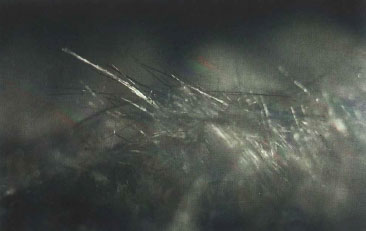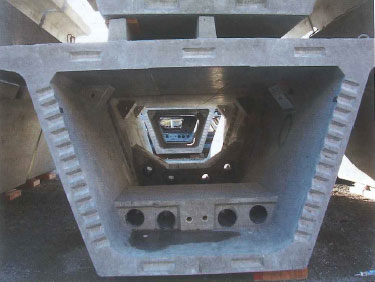Alireza Biparva, B.Sc., M.A.Sc., LEED Green Assoc., R&D Manager / Concrete Specialist, Kryton International Inc.
Construction is booming at a global level, but few places are building at such a furious rate as China, United States of America and India. According to the Global Construction 2030 Report from PwC, construction output will grow by 85% to $15.5 trillion worldwide by 2030. China, U.S. and India are expected to account for 57% of all global construction growth in that time. This means the global construction industry is going to be rapidly growing and adapting to fit the needs of the citizens of the present and future. Further, infrastructure construction is booming as populations will increasingly be centralized in cities.
 With population growth and centralization in cities, the demand for concrete built infrastructure, both residential and commercial will increase because of concrete’s advantageous properties such as high durability and versatility. Currently the way concrete structures are being built is making a shift. Sustainable development is emerging as the new impetus, and the desire to ensure a structure’s long-term durability is gaining traction whereas previously, cost used to be a reigning factor.
With population growth and centralization in cities, the demand for concrete built infrastructure, both residential and commercial will increase because of concrete’s advantageous properties such as high durability and versatility. Currently the way concrete structures are being built is making a shift. Sustainable development is emerging as the new impetus, and the desire to ensure a structure’s long-term durability is gaining traction whereas previously, cost used to be a reigning factor.
When added or applied to concrete, Krystol chemicals create a reaction that causes long, narrow crystals to form, filling the pores, capillaries and hairline cracks of the concrete mass.
Other key factors that are considered in today’s construction are speed of construction and cost. Precast concrete is a type of construction where concrete is cast in a reusable mould, which is then cured at a site other than the construction site. It is then transported to the construction site and lifted into place. Precast concrete products have been popular throughout the world for many years.
A notable specific benefit is that these precast forms can be created in a controlled environment, and out of the hot, humid or cold weather. This allows for better quality control and standard production. For projects where tight tolerances and dimensional accuracy are paramount, using precast concrete facilitates the construction process. Construction efficiency is increased without compromising the integrity of the concrete, while significantly reducing the on-site labour needs, waste, noise and disturbance.
While precast concrete has been an excellent solution to building quickly and accurately, the durability of precast concrete is not solely reliant in the quality of the concrete, nor is it reliant on the application and construction of these pieces. According to statistics worldwide, the ingress of water and water-borne chemicals is the greatest threat to early concrete deterioration. Many projects that have precast elements, such as sewage pipes, which are constructed several meters deep into water tables are the risk of internal and external deterioration, These precast elements often face constant contact with water and aggressive chemicals that could cause premature failure. Even above grade exposed precast products such as bridges are vulnerable to premature deterioration. These elements are exposed to the weather, water and chemicals during their service life.
Most of the mechanisms attacking concrete structures are waterborne. The penetration of Water into concrete is a critical factor in the corrosion of steel reinforcement. This corrosion can lead to major repairs or even replacements to structures only a few years after initial construction, as the core of the structure is weakened. As a porous material, concrete can allow water to migrate through it, bringing in harmful chemicals, causing short or long-term issues that require serious attention. Having a reliable waterproofing system is vital to having a durable precast product. Overall, having a durable structure that can last for generations, allows resources to be used to fuel growth rather than used for repairs.
 In order to effectively ensure a concrete structure’s durability, which leads to a longer lifespan and a more sustainable building, the concrete must first be effectively waterproofed. Overall, as is the case in business, there are often several options to choose from; concrete waterproofing is no different.
In order to effectively ensure a concrete structure’s durability, which leads to a longer lifespan and a more sustainable building, the concrete must first be effectively waterproofed. Overall, as is the case in business, there are often several options to choose from; concrete waterproofing is no different.
One of the options available on the market is an external surface-applied membrane.The membrane is installed after concrete has hardened. However, this solution is not viable or practical in most cases for precast elements. External membrane failure can occur in a number of different situations, most as a result of design errors, installation mistakes, or material limitations and defects. This is why simplifying the process by making the concrete itself serve as the waterproofing barrier can prove valuable especially for precast elements.
Using an integral crystalline waterproofing (ICW) products, such as Krystol internal Membrane (KIM®) admixture or Krystol T1® and Krystol T2® coatings, as the concrete’s waterproofing solution in high value precast items such as pipe manufacturing, beams or vaults, adds a critical layer of defense to mitigate the rise of early deterioration.
When KIM is added to concrete as an admixture or Krystol T1 and T2 is applied to the concrete surface as a coating, the Krystol chemicals contained create a chemical reaction with the un-hydrated cement particles and water. This reaction, called crystallization, causes long, narrow crystals to form, filling the pores, capillaries and hairline cracks of the concrete matrix. The crystallization will continue as long as moisture remains present.
Once the concrete has cured, the crystalline chemicals lay dormant until another dose of water causes the chemical reaction to begin again.The ability to reactivate in the presence of water gives Krystol-treated concrete the ability to improve and self-seal during the service life of the structure. If cracks form due to shrinkage, settling or seismic activity, water entering through them will cause new crystals to form and grow, blocking and filling those cracks. The most unique and effective feature is its ability to improve the self-sealing ability of concrete, which can help to dramatically reduce the long-term maintenance and repair costs of a concrete structure KIM crystalline admixture brings many long-term values to projects in areas where high hydrostatic water pressure is a major concern. KIM allows developers to build structures that are resilient, durable and sustainable by replacing the need for an external waterproofing membrane. Using KIM reduces the risk and potential liabilities on clients and stakeholders with a technology that improves the concrete matrix and transforms the concrete into a waterproof barrier.
The long-term growth forecast for the construction industry heralds expected growth in the precast concrete sector. As the global building trends move toward developing innovative, more sustainable building practices, increasing the durability oi the materials used will ensure that infrastructures and buildings achieve the longevity they were designed for.
Literature
Global Construction 2030: a global forecast for the construction industry to 2030 – pwc https://www.pwc.com/gx/en/industries/engineering-construction/publications/pwc-global-construction-2030.html
Source: Concrete Plant International